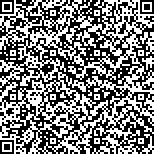下载中心
优秀审稿专家
优秀论文
相关链接
摘要

为了解中国上空SAGE反演的平流层气溶胶数据质量,将合肥地区地基激光雷达观测10年(1996年-2005年)的气溶胶数据与SAGE资料进行比较。通过较为系统全面的比较分析,得到如下结果:(1)10-30 km内SAGE与LiDAR分析的气溶胶变化趋势较为一致,出现峰值和低值的位置也较为接近;(2)SAGE结果普遍比LiDAR测量的偏小,对应的平流层气溶胶AOD差异显著,定量表现为:激光雷达获取的平流层气溶胶AOD基本约为0.004,SAGE反演的平流层气溶胶AOD基本约为0.002,只有前者的一半;(3)两者分析的20-35 km气溶胶季节分布差异较小,再次表明平流层气溶胶比较稳定。
This study aims to assess the quality of retrieved stratospheric aerosol data from the Stratospheric Aerosol and Gas Experiment (SAGE) in China. Data from 10-year observation of ground LiDAR in Hefei, China were comparedwith the corresponding SAGE aerosol dataset. This work focused on the 20-40 km aerosol extinction profile and AOD to elucidate stratospheric aerosol. Two methods were used to form matching pair for LiDAR and SAGE because of the limited observation samples in Hefei for SAGE limb detection. The first method is singe profile matching, which matches the observed aerosol profile within the same day with the temporal and 10° spatialdistancetoobtain approximately 24 matching pairs. The second method is multi-profile matching, which matches the aerosol profiles with the 10° spatial distance within a certain period, such as per season; subsequently, differences in the averaged profiles were compared among the four seasons. Comprehensive comparisons show that aerosol variation trends are consistent when derived from LiDAR and SAGE in 10-30km. The positions of peaks and valleys of the aerosol extinction profile are similar. In addition, aerosol seasonal differences in 20-35km from LiDAR and SAGE, respectively, are relatively smaller, which reflects the stability of stratospheric aerosol. However, the detailed value distribution shows that the SAGE results are generally smaller than those of LiDAR, and their corresponding AODs differ within 20-40km. The quantitative results show that the aerosol AOD within 20-40 km as observed by LiDAR is approximately 0.004; the corresponding results retrieved by SAGE is approximately 0.002, which is only half of the former. The evident differences in LiDAR and SAGE results for stratospheric aerosol AOD and their extinction profiles are mainly attributed to their different measurement and retrieval methods. Furthermore, large temporal and spatial scales are required to match the LiDAR and SAGE observations, which may cause uncertainties in the compared results because of different detection technologies employed. Moreover, the SAGE aerosol profile was retrieved from Mie scattering theory. By contrast, the LiDAR aerosol profile was calculated using Fernald method, which requires the adjustment of several important constants, such as back scattering ratio and reference height. Artificial choices for these constants increase the possibility of errors for LiDAR aerosol retrieval. Therefore, different and complex retrieval methods can increase bias in the compared results. Comparisons of aerosol within 20-40 km from SAGE and LiDAR in Hefei, China show that variation in stratospheric aerosol is generally reasonable as reflected by SAGE retrieval. The quantitative AOD value is systemically lower than half of that detected by ground LiDAR.

